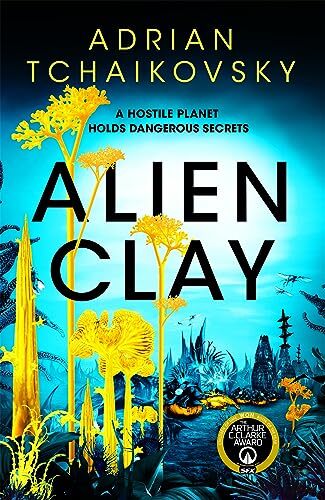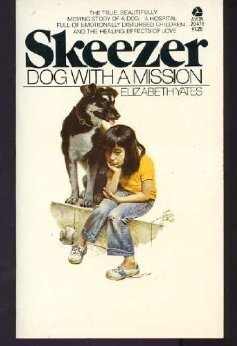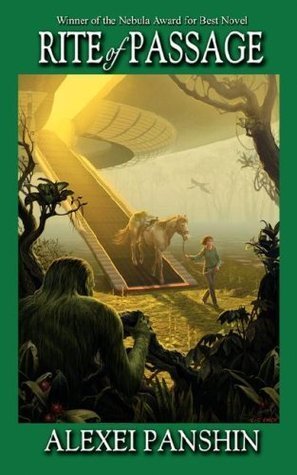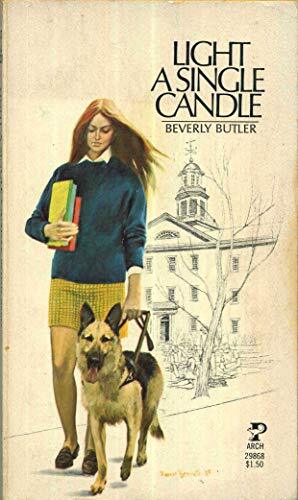Rachel Manija Brown's Blog, page 11
September 12, 2024
Alien Clay, by Adrian Tchaikovsky

Earth has been taken over, or more taken over, by right-wing religious extremists who maintain a prison camp on a very strange alien world called Kiln. They do lots of other things that are more practical, too; the alien prison camp is basically an expensive example of what could happen to you.
Professor Arton Daghdev, a professor and scientist, ends up on Kiln for fomenting revolution. About two-thirds of the book is an account of life in the prison camp, which is full of deliberate cruelties both large and petty. It's very plausible and very oppressive, both for the prisoners and for the reader - the latter feeling is added to because the prisoners also dislike and distrust Daghdev, as they suspect him of turning in the other revolutionaries. So for most of the book, everyone is mean to him, he has no friends, and nothing nice happens ever. There's tantalizing hints about the mystery of the alien world, but they're mostly in the background.
In the last third, we get to see more of the alien world FUCKING FINALLY. Also, Daghdev makes some... friends might be pushing it... but at least allies. And at the very end, we learn the secret of Kiln, which is extremely cool.
This is a good book that I did not enjoy. I wanted more weird biology. I got mostly prison politics. The cruelty and oppression are both pervasive and extremely believable, as it's all extrapolations or transpositions of bad stuff happening in reality right now. Again, well-done but not enjoyable.
I also didn't enjoy Daghdev's narration. It's very exposition-y. It makes sense for his character and is clearly a deliberate choice, but not one that I liked. What I don't think was deliberate was that the characters mostly blend together. At one point there's a dramatic revelation of who the mole is, and I could not for the life of me remember who that character was.
Unlike many writers, Tchaikovsky is 100% capable starting with the ending revelation about Kiln, and spending the whole book exploring that. I would have liked that 100% more.
What did I like? The thematic unity, which is extremely well-done. Kiln - the planet, not the prison camp. The revelation of the mysteries of Kiln, which is original, clever, and cool.
 comments
comments
Published on September 12, 2024 13:52
September 6, 2024
Skeezer, by Elizabeth Yates

At some point before this book was published (in 1973, the year I was born), the Children's Psychiatric Hospital in Ann Arbor, Michigan became the first American hospital to have a live-in therapy dog. Once the hospital got the idea, a veterinarian selected Skeezer, a five-month-old mutt, from the university's animal research lab; she had previously been a stray. Therapy dogs were not a thing then; the vet picked her because she seemed friendly and smart, and while she was trained in terms of what she could and could not do on the hospital premises, she wasn't trained in any specific techniques in terms of interacting with the child patients. Skeezer just had a knack for knowing what each child needs, whether it's tender cuddling or boisterous play. And Skeezer has her own doggy needs. (The doctors eventually figure out that she needs not just her own space where no one will bug her, but days off.)
Each chapter follows a different child patient and their interactions with Skeezer, but the book as a whole is chronological and follows a very loose throughline about the particular group of children who are there. (They're real children with their names and identifying details changed.) It concludes with Skeezer still going strong, and most of the kids going home and a new bunch of kids coming in. The children's diagnoses and the theoretical framework for their treatment is of the time, but their circumstances - child abuse, psychosis, anxiety, etc - are universal. Being able to spend long periods in a residential facility with good food, therapy, individual attention, interaction with other kids, and of course Skeezer are very healing. I don't think that's something that's available in the US anymore, except perhaps for the top .1%.
This is a sweet, delicate, bittersweet book with sweet, delicate, bittersweet illustrations. The afterword says that the artist, Joan Drescher, used her children and their friends as models.
Of interest to
![[personal profile]](https://i.gr-assets.com/images/S/compressed.photo.goodreads.com/hostedimages/1491408111i/22407843.png) osprey_archer
, Yates is otherwise known for winning the 1961 Newbery Medal for Amos Fortune, Free Man.
osprey_archer
, Yates is otherwise known for winning the 1961 Newbery Medal for Amos Fortune, Free Man. comments
comments
Published on September 06, 2024 14:48
September 3, 2024
Can anyone do an emergency proofread?
Our proofreader for Traitor fell through at the last minute - would anyone care to do an emergency proofread for a long novel on short notice for a nominal sum (or a lovely piece of pottery?) Please email me at Rphoenix2@gmail.com if you would.
 comments
comments
 comments
comments
Published on September 03, 2024 14:15
September 2, 2024
Goldilocks, by Laura Lam

Five women steal a spaceship and set out to save the Earth. Sounds good, right?
The more detailed version of the premise is that Earth is so environmentally devastated, humanity is in danger of going extinct. But there is hope: a warp drive is invented, a habitable planet with only plant life is discovered, and NASA plans to move humanity to it. But a Trump-like president is elected in America, and women are banned from all or most jobs, including at NASA. Somehow this causes women to lose all rights worldwide. The women who were originally supposed to be part of the five-person crew to start up the colony on the planet are fired, and an all-male crew is readied. But the women steal the spaceship and go to start the colony themselves.
If that makes you think "Wait a second, that doesn't make sense... and that doesn't make sense... and..." it's even less sensible with more detail. Is there any other resistance to women losing the right to work? How did America get to a policy where women are forcibly implanted with IUDs after they have one child because abortion is banned and any subsequent children are met with a stiff fine? Who knows! (The way women lose the right to work is that they're given financial aid if they stop working when their child is born, then not re-hired when their child is older. So basically, the current state of much of the US, minus the financial aid.)
How do five astronauts and one Earth confederate steal a NASA spaceship which is the main vehicle of a currently active mission which is considered to be the only way to save the world? How does NASA plan to save Earth via colonization when there's exactly one warp drive spaceship in the entire world and it only carries five people? How are FIVE PEOPLE supposed to set up a colony that will support a big chunk of the entire population of the Earth? If more ships with more people will arrive later, why not wait and build a bigger ship carrying more people?
But that's not the only problem with the book. Chapters from the mission alternate with completely random flashbacks: five years previously, eight years previously, one year previously, four years previously, etc. This makes the past action extremely hard to follow. But it kind of doesn't matter, because the flashbacks are extremely boring and don't provide any actual information other than dull recaps of fundraisers (yes really) and the main character's boring relationship with her ex-husband who is also an astronaut. Also, despite women supposedly being oppressed more than they are now, the only oppression we actually see is the women astronauts being booted out of NASA.
The crew consists of the boring heroine and her boring mentor, and three crew members who have no personality whatsoever. Two are married to each other, and one is Russian. Not even stereotypically Russian. Just, all we know about her is that she's Russian.
Some potential drama occurs partway, but is ruthlessly crushed. Then my least favorite plot twist ensues, followed by a deeply obnoxious conclusion. Spoilers!
( Read more... )
I HATED this book. I hated it so much that, although I've hated other books more, a quote from "I Have No Mouth and I Must Scream" came immediately to mind:
HATE. LET ME TELL YOU HOW MUCH I'VE COME TO HATE YOU SINCE I BEGAN TO LIVE. THERE ARE 387.44 MILLION MILES OF PRINTED CIRCUITS IN WAFER THIN LAYERS THAT FILL MY COMPLEX. IF THE WORD HATE WAS ENGRAVED ON EACH NANOANGSTROM OF THOSE HUNDREDS OF MILLIONS OF MILES IT WOULD NOT EQUAL ONE ONE-BILLIONTH OF THE HATE I FEEL AT THIS MICRO-INSTANT FOR YOU. HATE. HATE.
 comments
comments
Published on September 02, 2024 11:45
August 22, 2024
Eat, Drink, and Make Merry is running again!
![[community profile]](https://i.gr-assets.com/images/S/compressed.photo.goodreads.com/hostedimages/1497869825i/23063418.png) eatdrinkmakemerry
is running again! It's a low-commitment multifandom exchange celebrating food and drink. Check it out!
eatdrinkmakemerry
is running again! It's a low-commitment multifandom exchange celebrating food and drink. Check it out! comments
comments
Published on August 22, 2024 12:44
August 21, 2024
Confessions of a Prairie Bitch: How I Survived Nellie Oleson and Learned to Love Being Hated
[image error]
I am not a true fan of the Little House on the Prairie TV show. I've enjoyed the episodes I've seen, but I've only ever seen about five of them. (I do love the books, despite their problematic - to say the least - nature.) But when I went to a Little House convention with a friend who is a true fan, I got to hear Alison Arngrim speak, and instantly knew I had to read her memoir. Here she is watching a film of the play Peter Pan on TV as a child:
My favorite number was the bizarre sequence where Captain Hook and Peter Pan chase each other around a large papier-mache tree, singing "Oh, Mysterious Lady." A grown-up, somewhat older woman, pretending to be a young boy pretending to be a grown-up, younger glamorous woman by doing not much more than prancing around with a green scarf over her head and singing in a very high register, yet the guy in the pirate suit believes her. Wow. To me it was proof that grown-ups really are insane. And so began the launch of two major themes in my life: my love for and fascination with villains of all kinds, and my total lack of respect for traditional definitions of gender.
If you're not familiar with the TV show Little House on the Prairie, it was only loosely based on the books (same characters, mostly different stories), was a smash hit that aired for NINE YEARS, and starred Michael Landon as Pa, a sensitive sex symbol who often went shirtless and, Arngrim informs us, always went commando under his very tight jeans. Arngrim was a child actress who played Nellie Oleson, rich bitch and rival to the heroine, Laura Ingalls.
Arngrim was raised in a Hollywood family. Her mother was the voice of Gumby and Casper the Friendly Ghost. Her father, who was also her agent, was not-so-secretly gay. Her older brother Stefan played sad-eyed orphans. He was also a mentally disturbed sadist who beat and raped her on a regular basis. Since her parents brushed off her attempts to tell them, she decided she needed to move out to get away from him, and to move out she needed money, and to get money she needed a job, and acting was the only well-paid job a child could have, so she took up acting. She was eleven.
She was soon cast in Little House on the Prairie, where she found the family she didn't have at home. Her on-show enemy Melissa Gilbert became her best friend and the adults on the show were kind to her, with allowances for insanely dangerous stunts, long hours in extreme heat, and a painful blonde wig. But what she didn't see coming was the repercussions of becoming incredibly famous for being a villain...
Arngrim is very, very funny, and has a gift for the details that tell. She's also unflinching about the abuse she endured, and how incest was basically legal at the time: penalties for raping a child were minimal, and if the child was a family member, it was only a misdemeanor. As an adult, she campaigned to make child sexual abuse a felony, regardless of whether the child was a relative. She also did a lot of work raising AIDS awareness after her on-show husband contracted HIV.
Alison Arngrim seems like a really good person who's also funny, sharp, and down-to-earth. Unlike many stars who get typecast, she embraces the role of Nellie and everything it brought her, good and bad alike (but mostly good). I loved her memoir and highly recommend it if you can deal with reading about child abuse. If you liked I'm Glad My Mom Died, you'll definitely like this.
I listened to it on audio, and I recommend this method. She's a stand-up comedian, and her voice and impeccable timing adds a lot. Her imitation of Melissa Gilbert alone is worth getting the audio.
 comments
comments
I am not a true fan of the Little House on the Prairie TV show. I've enjoyed the episodes I've seen, but I've only ever seen about five of them. (I do love the books, despite their problematic - to say the least - nature.) But when I went to a Little House convention with a friend who is a true fan, I got to hear Alison Arngrim speak, and instantly knew I had to read her memoir. Here she is watching a film of the play Peter Pan on TV as a child:
My favorite number was the bizarre sequence where Captain Hook and Peter Pan chase each other around a large papier-mache tree, singing "Oh, Mysterious Lady." A grown-up, somewhat older woman, pretending to be a young boy pretending to be a grown-up, younger glamorous woman by doing not much more than prancing around with a green scarf over her head and singing in a very high register, yet the guy in the pirate suit believes her. Wow. To me it was proof that grown-ups really are insane. And so began the launch of two major themes in my life: my love for and fascination with villains of all kinds, and my total lack of respect for traditional definitions of gender.
If you're not familiar with the TV show Little House on the Prairie, it was only loosely based on the books (same characters, mostly different stories), was a smash hit that aired for NINE YEARS, and starred Michael Landon as Pa, a sensitive sex symbol who often went shirtless and, Arngrim informs us, always went commando under his very tight jeans. Arngrim was a child actress who played Nellie Oleson, rich bitch and rival to the heroine, Laura Ingalls.
Arngrim was raised in a Hollywood family. Her mother was the voice of Gumby and Casper the Friendly Ghost. Her father, who was also her agent, was not-so-secretly gay. Her older brother Stefan played sad-eyed orphans. He was also a mentally disturbed sadist who beat and raped her on a regular basis. Since her parents brushed off her attempts to tell them, she decided she needed to move out to get away from him, and to move out she needed money, and to get money she needed a job, and acting was the only well-paid job a child could have, so she took up acting. She was eleven.
She was soon cast in Little House on the Prairie, where she found the family she didn't have at home. Her on-show enemy Melissa Gilbert became her best friend and the adults on the show were kind to her, with allowances for insanely dangerous stunts, long hours in extreme heat, and a painful blonde wig. But what she didn't see coming was the repercussions of becoming incredibly famous for being a villain...
Arngrim is very, very funny, and has a gift for the details that tell. She's also unflinching about the abuse she endured, and how incest was basically legal at the time: penalties for raping a child were minimal, and if the child was a family member, it was only a misdemeanor. As an adult, she campaigned to make child sexual abuse a felony, regardless of whether the child was a relative. She also did a lot of work raising AIDS awareness after her on-show husband contracted HIV.
Alison Arngrim seems like a really good person who's also funny, sharp, and down-to-earth. Unlike many stars who get typecast, she embraces the role of Nellie and everything it brought her, good and bad alike (but mostly good). I loved her memoir and highly recommend it if you can deal with reading about child abuse. If you liked I'm Glad My Mom Died, you'll definitely like this.
I listened to it on audio, and I recommend this method. She's a stand-up comedian, and her voice and impeccable timing adds a lot. Her imitation of Melissa Gilbert alone is worth getting the audio.
 comments
comments
Published on August 21, 2024 11:14
August 19, 2024
Rite of Passage, by Alexei Panshin

Mia Havero is a teenage girl living on a spaceship. After Earth was destroyed, humanity remains on several very large spaceships and about a hundred colonized planets. The spaceships have a high standard of living, strictly controlled population, and high technology. The planet colonies are nasty, brutish, and short... well, small, anyway. They have a low standard of living and low technology, as the spaceships don't share scientific knowledge, but only trade it in tiny snippets for goods. Spaceship people despise the colonists, calling them Mudeaters, and don't tend to leave their ships...
...except when they're fourteen. Then they get dumped on a random planet, where they have to survive for a month. If they survive - and about a quarter of them don't - they return as an adult. This is presented to them as a way to keep the population in check; it's only discussed as a meaningful rite of passage when they're actually training to do it.
Mia doesn't see any problem with this or with any other ship customs. Her adored father, a politician, always has wise explanations for everything, and Mia internalizes them. Of course the Mudeaters are so backward, they're not even people. Of course it's fine to do population control by dumping teenagers on a planet where a bunch of them will die. As she gets older and begins preparing for her Trial, she starts getting exposed to other opinions. They don't make much of a dent... until she actually does get dumped on a planet.
This book was written in 1968 and won the Nebula, but is now out of print. It's less dated and more interesting than quite a bit of SF from the same period that is still in print. In particular, while it seems to have been written as both a homage to and a critique of Heinlein's juveniles, it also has quite a bit in common with Emily Tesh's Some Desperate Glory, which did not win the Nebula but did win the Hugo this year.
Mia is an unusually flawed character for the protagonist of 1968 science fiction. She's smart and competent, but extremely socially anxious, arrogant, rigid, and bad at relating to people. People often don't like her, and it's not because they're jealous. Even more surprisingly, her perfect, wise, wonderful father turns out to not be quite the perfect, wise, always-right Heinlein mentor... or rather, he really is a Heinlein mentor, except he's written by Panshin rather than Heinlein, and Panshin doesn't think his ideas are good. The aspects of the Trail that seem particularly insane, like that the only way to get picked up is to set off a signal contained in a tiny box and too bad if the box gets lost, broken, or stolen, turn out to not be the author not thinking it through, but a depiction of how the ship society is deeply fucked up and broken.
Most of the book is a character study of Mia as she grows up in her society, focusing on her day-to-day life and how she matures (or doesn't.) It's very well-done and enjoyable, with some Growing up Weightless vibes. The Trial itself is only the last quarter of the book.
Spoilers!
( Read more... )
Spoilers are fine in comments.
 comments
comments
Published on August 19, 2024 12:47
August 7, 2024
Light a Single Candle, by Beverly Butler

A semi-autobiographical YA novel about a teenager whose life changes when she becomes blind. Casey is fourteen and already having problems with failing vision, but doesn't realize that anything is wrong beyond needing new glasses until a doctor with a less than ideal bedside manner informs her that she has glaucoma and will become blind without an operation; the operation is a failure and she becomes completely blind.
She's understandably shocked and upset, but soon realizes that people's reactions to her blindness might be a bigger problem than the blindness itself. Her best friend abruptly dumps her, and she and her parents are contacted by an absolutely horrible woman who runs a school for the blind, who tells her that it will be impossible for her to go back to her regular school, even with support, and she can only survive in a blind boarding school. Cathy, upset at her former friend's reaction and imagining it repeated throughout the school, agrees. But the school is awful and academically unchallenging, designed to funnel the girls into being housewives and the boys into making the cane seats for chairs, and Cathy wants to go to college...
How Cathy fights her way through other people's expectations, adult and teenage bullies, and life that changes out from under her makes for an excellent novel, thoughtful and well-written and just plain enjoyable to read. It reminded me a bit of Mary Stolz. Cathy is a very likable and distinct protagonist, not an everygirl; she has a strong personality, which leads to her dealing with some things with unexpected ease (she has a good visual imagination, so she can picture things well enough that she sometimes forgets that she's not actually seeing them) and others with unexpected struggles (loving her guide dog is easy, but training her is hard.)
The supporting cast is very well-drawn, and the book as a whole is distinctly unsentimental. There's a subplot about a guy with a crush on her who she finds gross but feels like she ought to at least give a chance, since people say romance is great, which made me cringe with its hideous relatability.
Beverly Butler also became blind at the same age, though I don't know if the reason was the same.
The novel was published in 1962, but I suspect that the details of what it's like to be a blind teenager are a bit older, if they're autobiographical; probably closer to the early 50s or even 1940s. Or maybe not. The Americans with Disabilities Act was only passed in 1990. In any event, the book has the detail and messiness of real life, and is additionally an interesting window into what it was like to be a blind teenager in whatever time it was.
Butler wrote a sequel plus a bunch of other books. I'll keep my eye out for them as I really enjoyed this.
 comments
comments
Published on August 07, 2024 15:47
August 6, 2024
Hope
I'm making myself a big plate of assorted kimchi and kimbap from H Mart to watch the Harris-Walz rally. Yes, I know, hot dish would be more appropriate to the occasion, but it's like 100 degrees here.)
Hope and joy is real.
[image error]
 comments
comments
Hope and joy is real.
[image error]
 comments
comments
Published on August 06, 2024 14:26
August 5, 2024
Incidents Around the House, by Josh Malerman

The first time I told Mommy and Daddo about Other Mommy they laughed. It was good-night time and I told Mommy good night and then I said it again and Mommy said,
Why do you say that twice, Bela?
And I said,
I was saying good night to Other Mommy.
Daddo laughed and shut the light and they left my room, but I saw Mommy look back once through the crack in the door. Her eyes looked right at mine. Then she and Daddo went to their own bedroom.
Then Other Mommy made the grunting sound she makes when she stands up on the other side of my bed, in the space between my bed and the wall, when she's been crouched down there on the carpet waiting for them to leave.
A horror novel narrated by a very young girl, about the Other Mommy who lives in her closet and keeps asking, "Can I come into your heart?"
(I assume Other Mommy is a nod to Coraline's Other Mother, which was uhhh kind of unfortunate timing.)
The sample above is how the whole book is written. That sort of thing can sometimes drive me nuts, but it was extremely effective in this. I read the book in a single sitting, and then had to stay up very late reading something less creepy and twitching every time my cats moved.
The first quarter or so of this book is one of the most effective pieces of horror I've ever read. There's no violence or gore, and it's utterly chilling, tapping into childhood fears of things in the closet and under the bed and glimpsed in the corner of your eye. A big part of the fear is that Other Mommy doesn't come into clear focus - Bela knows what she looks like, so only mentions attributes when they're relevant - and every tiny bit of detail that she drops is utterly horrific. It approaches the original story "The Monkey's Paw" in terms of the evocation of sheer dread by what you don't see.
If the first quarter or so had a satisfying ending and then stopped, it would be a basically perfect horror novella. Unfortunately, it continues. Much of the rest of the book consists of the exact same event happening in slightly different contexts FOUR TIMES. But the larger problem with where the story goes after the first part is that it takes the Other Mommy, who is terrifying because what she is and what she wants is so unknown and maybe unknowable, and brings her more into the light, where she promptly becomes less scary. The conclusion is depressing, doesn't quite follow from previous setup, and is sufficiently confusing that it prompted multiple posts to r/horrorlit asking "What happened at the end?"
So, do I recommend this book? Well... the first bit is SO good. If you're interested in horror or writing horror, yes, it's good enough to read for pure enjoyment and as a masterclass in how to evoke more by revealing less.
The rest of the book, eh. It's good in parts. Bela's mother is a borderline misogynist stereotype of the bad cheating wife, though at least there's other normal women to balance her out, and her bad marriage with a saintly doormat is maddening to read. Bela's own narration is pretty convincing as that of a four or five-year-old, so I was surprised to re-read the blurb and see that she's supposed to be eight. What. No. (Her parents treat her like she's four but monologue at her like she's their therapist, but then again, they're AWFUL parents.)
Spoilers! ( Read more... )
Content notes: extreme spookiness, child in danger. There's some violence but it's extremely underplayed, non-graphic, and/or off-page.
 comments
comments
Published on August 05, 2024 11:00



